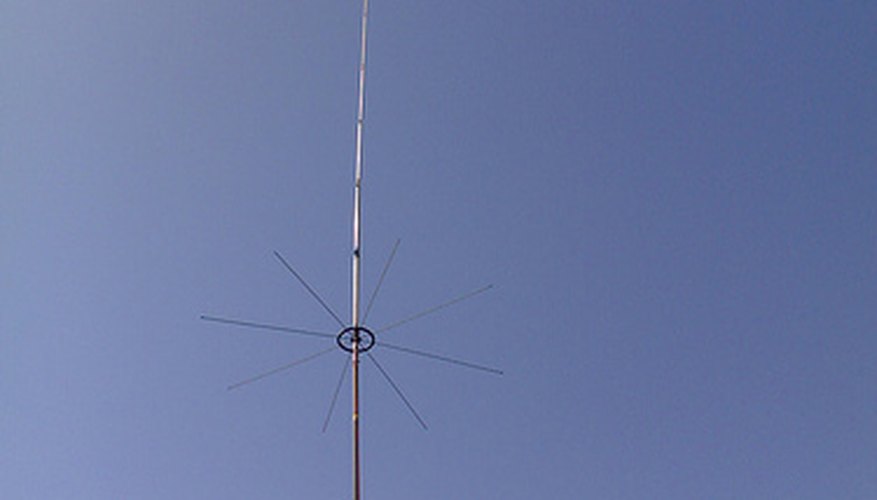A homemade beam or antenna for Citizens Band (CB) radio is easy to make, but the difficulty comes in matching and tuning the antenna with the transmitter. To understand antennas and beams, you have to learn terms such as frequency and resonance and have a good grasp of basic math. You'll also test your antenna-transmitter match and fine-tune it with a Standing Wave Ratio (SWR) metre.
Resonance and Math
A CB radio transmits on what is called the 11-meter band. That term is used because the wavelength for the CB radio wave is about 11 metres long. That means an antenna resonant on a full wave would be also about 11 metres long, and it would be a pretty big antenna at just a bit under 40 feet. A smaller antenna needs to be created that will resonate on an even division of this wavelength. That means we will be creating a quarter-wavelength beam antenna.
- A CB radio transmits on what is called the 11-meter band.
- A smaller antenna needs to be created that will resonate on an even division of this wavelength.
Channels
The next problem to be resolved is that the Citizen's Band is made up of 40 channels starting at 25MHz and ending just under 30MHz. That means no antenna you make is going to be ideal for all channels at once. The best you can hope for is to build an antenna that is resonant in the middle of the frequency, so it covers as much of the band as well as possible. It will be the most poorly matched on the lowest and highest channels.
- The next problem to be resolved is that the Citizen's Band is made up of 40 channels starting at 25MHz and ending just under 30MHz.
- The best you can hope for is to build an antenna that is resonant in the middle of the frequency, so it covers as much of the band as well as possible.
Materials and Methods
Your antenna needs to be strong but light. You'll need the standard building material for most antennas, aluminium tubing from the hardware store in three-quarter-inch or one-inch diameter. First you'll need the driven element length. The formula for a full wavelength in feet is 984/Frequency. The middle of the Citizen's Band is about 27MHz, so 984/27=36.4 feet. Now we divide by four to get a quarter wave of 9.1 feet. That is small enough to manage. For a three-element beam, we need a reflector, a director and the driven element. The reflector should measure the same as the driven element plus five per cent, and the director should measure the same as the driven element minus five per cent. This means we have three elements measuring 9.55 feet, 9.1 feet and 8.66 feet. The boom that these fit on should be 15 feet long. Use U-bolts and mount the reflector and director on each end of the boom. The driven element will go in the middle. Cut the driven element in half and use a piece of PVC pipe to mount the halves on either side of the boom. If the driver touches the boom, it will not work properly. Now connect your antenna leads to the driven element, check your SWR reading with a metre and verify you have a range of under three to one. If not, keep shortening your driven element a little at a time until it's within range.
- Your antenna needs to be strong but light.
- Now connect your antenna leads to the driven element, check your SWR reading with a metre and verify you have a range of under three to one.
